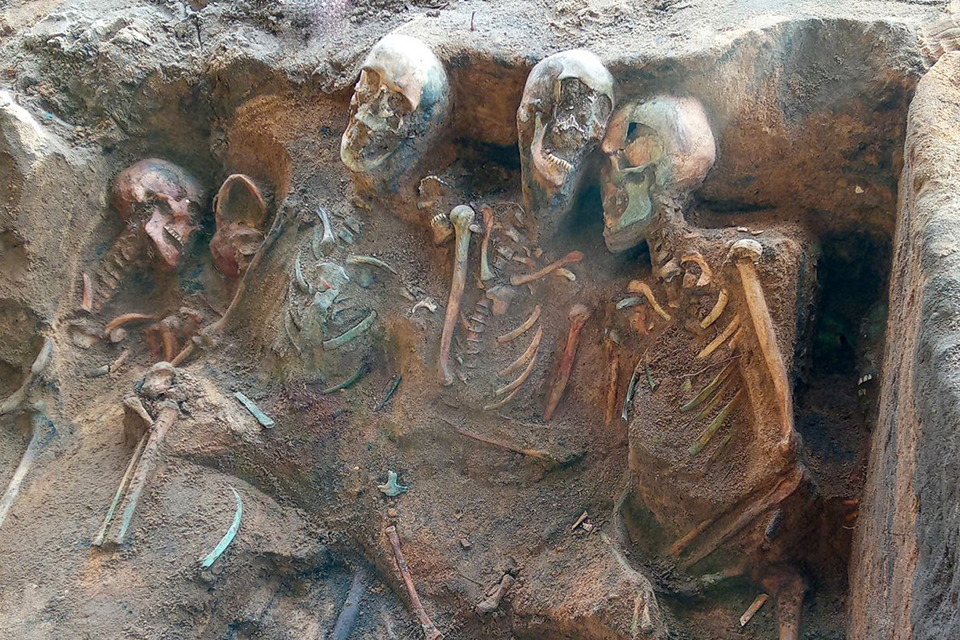After Covid, the natural history of the second great plague epidemic – The Black Death – has inspired scientists to work in interdisciplinary teams and develop new methods
Between the 14th to the 18th centuries, consecutive outbreaks of plague continued to harass the people of Europe. The question is whether the outbreaks were caused by the mutating bacterium or the continued existence of reservoirs among wild rodents? New genetic studies combined with archaeology provide some answers
One challenge, when studying the natural history of the continued outbreaks of plague in Europe between the 14th to 18th centuries hinges on the question of where the outbreak stemmed – from new epidemic inflows or natural reservoirs of rodents harbouring the virulent disease.
One challenge is that while the identification of the aDNA and its more than a hundred different mutations of Yersinia Pestis is no longer complicated, the precise dating of the different outbreaks and the human remains providing this information, is complicated as radiocarbon dating never provides precise information.
New research, however, has harnessed an interdisciplinary team to analyse some genomic evidence from eleven sites and 117 individuals in England, Estonia, the Netherlands, Russia and Switzerland dating between 1349 and 1710. By employing a novel method of fine-grained analysis of documented plague outbreaks with genomic evidence, the scientists have been able to link the two sources of information. A bonus is the development of a new method termed “phylogenetically informed radiocarbon modelling” (PhIRM) which may hopefully be employed in other contexts. As the scientists write: Yersinia pestis has the potential to serve as a “model organism” for historical epidemics and pandemics caused by zoonotic diseases”.
The main result is the launching of a new interdisciplinary approach to understanding the natural history of the plague epidemic. However, the team was also able to associate three genomes of the late 14th century with the events termed the pestis tertia (1362 -1379) and the pestis quarta (1378-1389). Also, the pestis secunda (1356-66) which continued for a hundred years to a putative sylvatic reservoir in modern-day Germany appears to have been ignited in Hesse and moving southwards (p. 16). As opposed to this, the spread of plague during the Thirty Years’ War in the 17th century, appears to have followed in the wake of the movement of armies and troops. Recently, archaeologists reported the excavation of amass-grave in Nuremberg (Nürnberg) dated to 1632-1633 holding more than 2000 skeletons. A report from those years claims that more than 15000 died that year. Some historians have argued that the epidemic following in the footsteps of the troops devastated Southern Germany to the extent that it preserved its culture and way of life setting it decisively apart from the protestant North.
The combined analysis of the phylogenetic and the radiocarbon dating of the human remains offers a fascinating potential when studying the outplay of the Justinian plague, which is often considered a one-off event. Likely, it was a similar prolonged affair as the epidemic in the later Middle Ages and Early Modern Europe.
FEATURED PHOTO:
Photo from massgrave in Nuremberg excavated by “In Terra Veritas”. © tera veritas
SOURCE:
A Refined Phylochronology of the Second Plague Pandemic in Western Eurasia
By Marcel Keller, Meriam Guellil1, Philip Slavin, Lehti Saag, Kadri Irdt, Helja Niinem, Anu Solnik, Martin Malve, Heiki Valk, Aivar Kriiska, Craig Cessford, Sarah A. Inskip, John E. Robb, Christine Cooper, Conradin von Planta, Mathias Seifert, Thomas Reitmaier, Willem A. Baetsen, Don Walker, Sandra Lösch, Sönke Szidat, Mait Metspalu, Toomas Kivisild, Kristiina Tambets, and Christiana L. Scheib
BioRxiv 2023
ABSTRACT
Although dozens of ancient Yersinia pestis genomes and a vast corpus of documentary data are available, the origin and spread of consecutive outbreaks of the Second Plague Pandemic in Europe (14th–18th c.) are still poorly understood.
For the majority of ancient genomes, only radiocarbon dates spanning several decades are available, hampering an association with historically recorded plague outbreaks. Here, we present new genomic evidence of the Second Pandemic from 11 sites in England, Estonia, the Netherlands, Russia, and Switzerland yielding 11 Y. pestis genomes with >4-fold mean coverage dating to between 1349 and 1710. In addition, we present a novel approach for integrating the chronological information retrieved from phylogenetic analysis with their respective radiocarbon dates, based on a novel methodology offering more precise dating intervals.
Together with a fine-grained analysis of documentarily recorded plague outbreaks, this allows us to tentatively associate all available Y. pestis genomes of the Second Pandemic with historically documented plague outbreaks.
Through these combined multidisciplinary analytical efforts, our newly sequenced genomes can be attributed to the Black Death in Cambridge (England), the pestis tertia or pestis quarta in the late 14th century (Estonia), previously unknown branches emerging in the 15th century (Estonia, the Netherlands and England), and a widespread pandemic in Eastern Europe around 1500 (western Russia), which all seem to have originated from one or multiple reservoirs located in Central Europe.
While the latter continued to harbour a major Y. pestis lineage at least until the 1630s, represented by new genomes of the Thirty Years’ War plague (Switzerland), another lineage consecutively spread into Europe between the 17th and 18th century from the Ottoman Empire, as evidenced by a genome associated with the Great Northern War plague (Estonia). By combining phylogenetic analysis with a systematic historical reconstruction based on textual sources and an innovative phylogenetically informed radiocarbon modelling (PhIRM), we offer a new groundbreaking interdisciplinary approach that solves several fundamental methodological challenges associated with phylogenetic and spatio-temporal reconstruction of historical pandemics.
